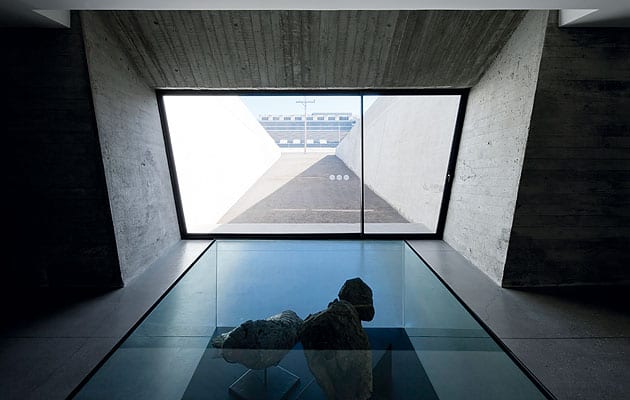|
The driest place on Earth now has a museum dedicated to it. The Museum of the Atacama Desert is located in Chile’s mining capital, the northern city of Antofagasta, and was designed by architects Ramón Coz, Marco Polidura, Iñaki Volante and Eugenia Soto. The four Chileans, who won the competition to build the museum back in 1996, had a dramatic site on their hands. The concrete building is next to the Huanchaca ruins, a former foundry from the days of the silver mining boom, which closed in 1902. Its massive, crumbling walls are an imposing landmark facing the Pacific Ocean. The rapid growth of the city means the ruins are no longer an out-of-town attraction. Huanchaca is now in the middle of the southern district, surrounded by new housing and a university campus. The museum is intended to capitalise on the Atacama’s climate – it has almost no rainfall – and act as an outdoor venue for the performing arts. This is the key to understanding the design. “We didn’t want to build a structure that would alter the ruins’ urban presence; on the contrary, the aim was to create a new piece able to merge into the landscape,” says Marco Polidura. The project is more a series of earth movements aiming to create public spaces than an autonomous object. The museum’s ramps connect a vast roof terrace with the esplanade that runs along the coast. The platform, with its impressive vistas, will provide a dramatic spot for orchestral and other performances. Somehow subordinated to the ruins, the museum itself is half-buried. The exhibition spaces are concealed under a series of five ramps. Sunken courtyards bring sunlight and views of the sky into the museum, which displays information on the Atacama’s geology, mining and its skies (the European Southern Observatory runs a large astronomical observatory in Paranal, east of Antofagasta). The architects chose to work exclusively with concrete for a lively but low-maintenance public space. “It was important that the outdoor spaces of the museum could resist very intense use, as they become the city’s most important cultural venue,” Polidura points out. “Raw concrete will age in an elegant manner; weathering and the sea air will change its colour. Also it’s a textured surface that interacts with the old walls of Huanchaca.” The reason it took 13 years to build the project was a lack funds. In the meantime a luxury hotel opened between the ruins and the beach, drastically altering the site conditions but providing money to complete the museum. |
Words Patricio Mardones Hiche |
|
|
||
|
Exhibition spaces are concealed under the ramps (image: Sergio Pirrone) |
||




















